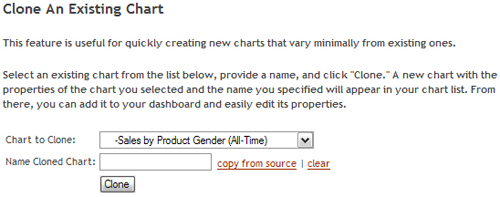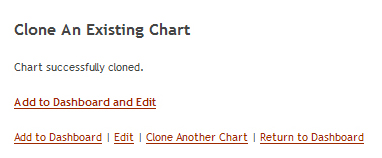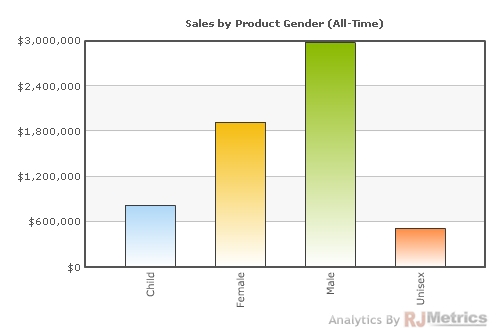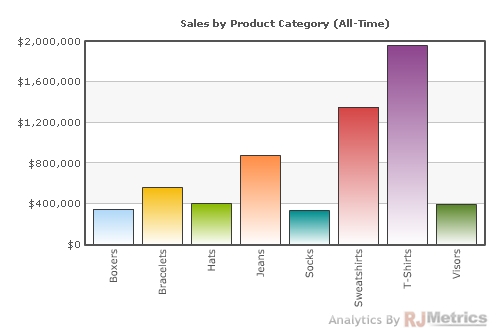There are more than a few reasons why our analytics dashboards are a cut above the rest. Here’s one: efficiency and usability are two of our most important principles. As such, it’s those little things that save a few seconds every time they’re used that make us the proudest. One example is our a “clone chart” feature that allows you to quickly create new charts using an existing chart as a template.
The clone chart option can be accessed in two ways:
1. Scroll over the title bar of any chart, and click the “clone” that appears in the upper-right corner:
2. Click on “add chart” from the top-right of any dashboard and then click “clone”:
After following either of these steps, the user is presented with the “clone chart” dialog box, which asks for a source chart to clone and a name for the new chart that will be created:
Depending on how you accessed this dialog box, the “chart to clone” field may be pre-populated for your convenience.
If your new chart’s name will only vary slightly from the source chart’s name, you can copy the name of the source chart to the name field by simply clicking “copy from source.” This allows you to make whatever small edits are necessary in a faster manner. The “clear” option can also be used to clear the “name cloned chart” field entirely.
When you have selected the desired options, simply press “clone” and the process is complete. You will then be given options for working with your new chart:
Naturally, you’ll want to edit the clone so that it differs from the original (remember, if you wanted to place your original chart on another dashboard you could do so by simply clicking “add chart,” choosing it from the drop-down list of existing charts, and pressing “add.”) You will also likely want to add the new clone to your dashboard for easy viewing later. To accomplish both of these tasks at once, simply click “add to dashboard and edit.” The clone will be added to the top-left position of the current dashboard and you will be taken to the “ RJMetrics Chart Wizard” to edit your new chart’s contents.
Using the other links above, you could alternately choose to only add the chart to your dashboard, only edit it, clone another chart, or simply return to your dashboard.
Let’s look at a simple example of using the “clone chart” feature to save some time. Let’s say a user wanted to create two charts: total sales by gender and total sales by product category, both for the same explicit time period. The first step, naturally, is to build one of these charts using the RJMetrics chart wizard. This might take 60-90 seconds:
Our user knows that this gender chart and the other chart she wants to build only vary in Step 3 of the chart wizard, so rather than starting from scratch and spending another 60-90 seconds building her second chart, she decides to clone her first chart and simply edit the clone. She follows the instructions above, names the cloned chart “total sales by product category (all-time),” and clicks “add to dashboard and edit.” Then, she simply clicks back to Step 3, changes the categorical grouping, and saves the chart. This whole process takes just a few seconds and has the same desired result as starting from scratch:
We just saved our user a solid minute, and those minutes add up! Stay tuned for more great features and tutorials about or data mining software and business intelligence dashboards.





